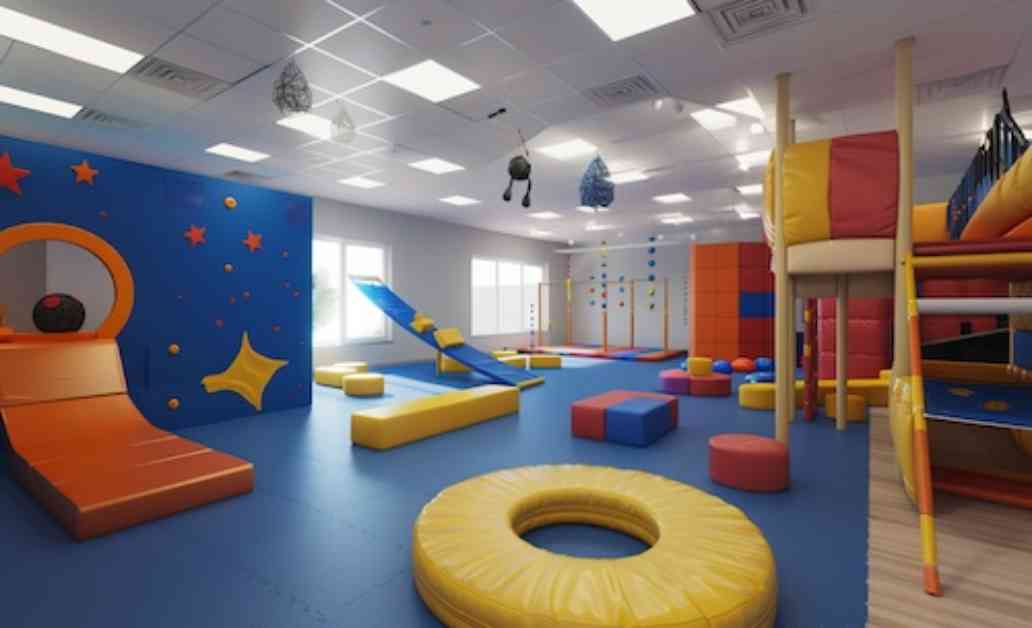Inclusive School Sensory Spaces: Supporting Students of All Ages and Abilities
As educators, it is essential to create environments that cater to the diverse needs of students. Sensory spaces have emerged as innovative solutions to meet the varying needs of learners, regardless of their age or abilities. These spaces offer a supportive environment where students can regulate themselves, advocate for their needs, and ultimately thrive in their educational journey. The benefits of sensory spaces extend beyond neurodiverse students, as they provide valuable tools for all individuals to manage their emotions and needs effectively.
Creating a Positive Impact through Sensory Spaces
Sensory spaces have proven to be instrumental in supporting students in their quest for self-regulation and advocacy. One successful example of this is the story of a student who struggled with restlessness and anxiety, particularly around reading. By incorporating a sensory space into the school environment, educators were able to provide a safe and comfortable space for the student to engage in reading activities while also addressing his need for movement. Over time, the student’s reading skills improved, and his confidence soared as he learned to advocate for himself and manage his emotions effectively.
Principal Nichole Schlagel, who spearheaded the implementation of sensory spaces in her school, highlights the transformative impact of these spaces on students. She emphasizes how sensory spaces have empowered students to recognize and address their needs, ultimately fostering a sense of self-resilience and confidence among learners. By providing students with the tools to regulate their emotions and advocate for themselves, sensory spaces play a crucial role in promoting holistic development and well-being.
Embracing Sensory Spaces in Educational Settings
The growing recognition of the value of sensory spaces in supporting students’ social-emotional well-being has led many educators to advocate for their integration into school environments. While the concept of sensory spaces may seem daunting to some, the benefits they offer in terms of supporting students’ diverse needs make them an invaluable resource for educational institutions. As schools continue to prioritize social-emotional learning, the incorporation of sensory spaces has become a crucial aspect of creating inclusive and supportive learning environments for all students.
Innovative Approaches to Meeting Student Needs
Sensory spaces have traditionally been associated with therapeutic settings, but their integration into educational environments has opened up new possibilities for supporting students of all abilities. These spaces serve as tools for neurodiverse students, helping them navigate the challenges they face in a school setting. For students with sensory processing challenges, sensory spaces provide much-needed downtime to process information and regulate their emotions effectively.
However, the benefits of sensory spaces extend beyond neurodiverse students to include all individuals who may require additional support at various times. Every student, regardless of their abilities, can benefit from having access to calming spaces, social spaces, or other sensory environments that cater to their unique needs. By offering a range of sensory spaces, schools can ensure that they meet students where they are and provide them with the support they need to thrive academically and emotionally.
Creating Effective Sensory Spaces in Schools
Designing sensory spaces that effectively meet the needs of students requires careful planning and collaboration among stakeholders. Setting clear goals for the spaces and ensuring that all members of the school community are involved in the planning process are essential steps in creating successful sensory environments. By consulting with students, educators, and other school staff, schools can gather valuable insights and perspectives to inform the design and implementation of sensory spaces that cater to a diverse range of needs.
Incorporating sensory spaces into school settings requires a thoughtful approach that considers the varying environmental needs of students. Just as schools offer a continuum of services to support students with different abilities, sensory spaces should be designed to accommodate a range of needs and preferences. Whether it’s creating a quiet corner in a classroom or a social space in a hallway, schools can provide students with the tools they need to regulate their emotions and advocate for themselves effectively.
Supporting Teachers and Students in Using Sensory Spaces
Professional support and training are essential components of implementing sensory spaces in schools. Educators need to understand the goals of sensory spaces, how they can be accessed, and how they can be used to support students effectively. By providing ongoing professional development and guidance, schools can ensure that teachers and students alike are equipped to make the most of sensory spaces and leverage them as valuable tools for self-regulation and advocacy.
Sensory spaces are not just physical environments but also serve as tools for teaching students how to regulate their emotions and advocate for their needs effectively. By fostering a culture of self-awareness and self-advocacy, sensory spaces empower students to take control of their learning and well-being. Educators play a crucial role in supporting students as they navigate these spaces and learn to use them to their advantage.
In conclusion, sensory spaces have emerged as valuable resources for educators seeking to create inclusive and supportive learning environments for students of all ages and abilities. By providing students with the tools to regulate their emotions, advocate for their needs, and thrive academically and emotionally, sensory spaces play a vital role in promoting holistic development and well-being. As schools continue to embrace the importance of social-emotional learning, the integration of sensory spaces will undoubtedly become a standard practice in educational settings.
For more news and resources on sensory spaces, visit eSN’s SEL & Well-Being hub to stay informed and inspired by the latest developments in creating inclusive school environments that support students of all ages and abilities.

